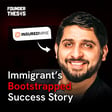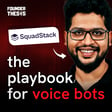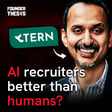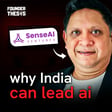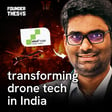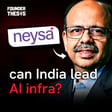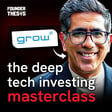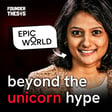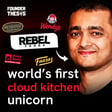
The Science of "Where": Decoding India for Modern Retail | Devashish Fuloria (GeoIQ)
"India is a data-poor country."
Most founders would see this as an insurmountable hurdle. In this episode, Devashish Fuloria explains how he saw it as the ultimate business opportunity—building a formidable competitive moat not despite, but because of the chaos of Indian data.
Devashish Fuloria is the Co-founder and CEO of GeoIQ, a location intelligence startup recently acquired by Lenskart in a deal valued between $15-20 million. In a masterclass on capital efficiency, he achieved this strategic exit after raising just $3.35 million in funding. With a lean team of around 40 employees, Devashish built a powerful AI engine that synthesizes over 600 disparate data sources to provide street-level intelligence, saving clients like Lenskart and GIVA over ₹300 Cr in potential costs. His journey is truly unconventional, beginning with a PhD in Materials Science from Imperial College London before pivoting to sports journalism at ESPNcricinfo and then to entrepreneurship.
In his conversation with host Akshay Datt, Devashish revealed several key insights:
- The "Data-Poor" Moat: GeoIQ's core advantage comes from its specialized ability to clean and structure messy, unstructured data unique to the Indian market—a feat global competitors struggle to replicate.
- The COVID-19 Pivot: A free API built to track containment zones during the pandemic became a turning point. It proved that businesses could consume location data at a user-level via API, shifting GeoIQ's model from selling maps to a high-volume, scalable SaaS product for the fintech sector.
- The Lenskart Playbook: The journey with Lenskart—from a key customer to lead investor to acquirer—serves as the ultimate B2B growth strategy. Lenskart validated the product by opening over 1,400 stores with a 5x increase in speed, which directly led to the strategic acquisition.
- Capital-Efficient Combat: GeoIQ successfully competed against global giants like Foursquare (with $448M in funding) by being ruthlessly focused on solving a single, high-value problem: de-risking offline retail expansion.
Chapters
(00:00) - Introduction
(01:37) - From the Himalayas to IIT: The Path to Engineering & a Love for Geology
(03:51) - A PhD in Materials Science & The Power of First-Principles Thinking
(07:02) - The Unconventional Detour: From Engineering to Sportswriting at ESPNcricinfo
(12:09) - The Genesis of GeoIQ: Finding Opportunity in "Data-Poor" India
(16:03) - Under the Hood: How GeoIQ Turns 600+ Messy Data Sources into Intelligence
(25:17) - The Pandemic Pivot: How a Free COVID API Unlocked a New Business Model
(29:12) - Finding Product-Market Fit: How Fintech's Need for User Data Drove Scale
(41:12) - The Lenskart Story: From Critical Vendor to a $20M Acquisition
(46:34) - The Future: Expanding to the US & the Next Frontier of Location AI
Hashtags
#FounderThesis #DevashishFuloria #GeoIQ #Lenskart #AkshayDatt #StartupIndia #SaaS #LocationIntelligence #B2B #DataScience #AI #MachineLearning #Fintech #RetailTech #CapitalEfficiency #Entrepreneurship #VentureCapital #ProductMarketFit #StartupPivot #Acquisition







